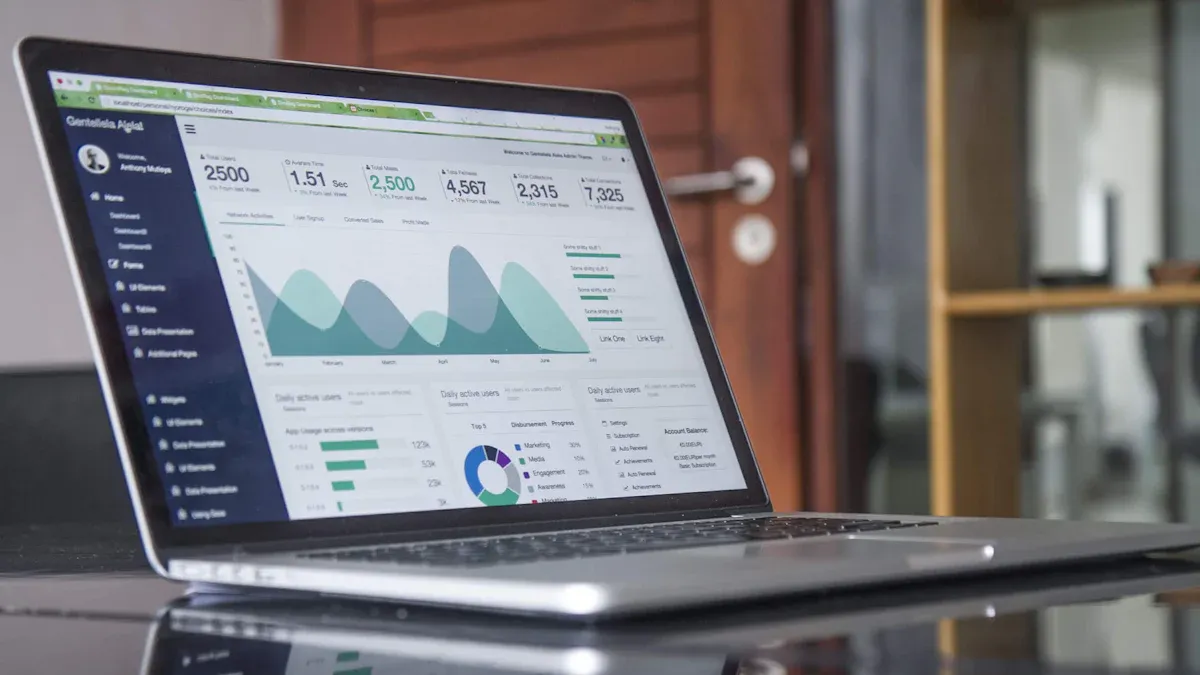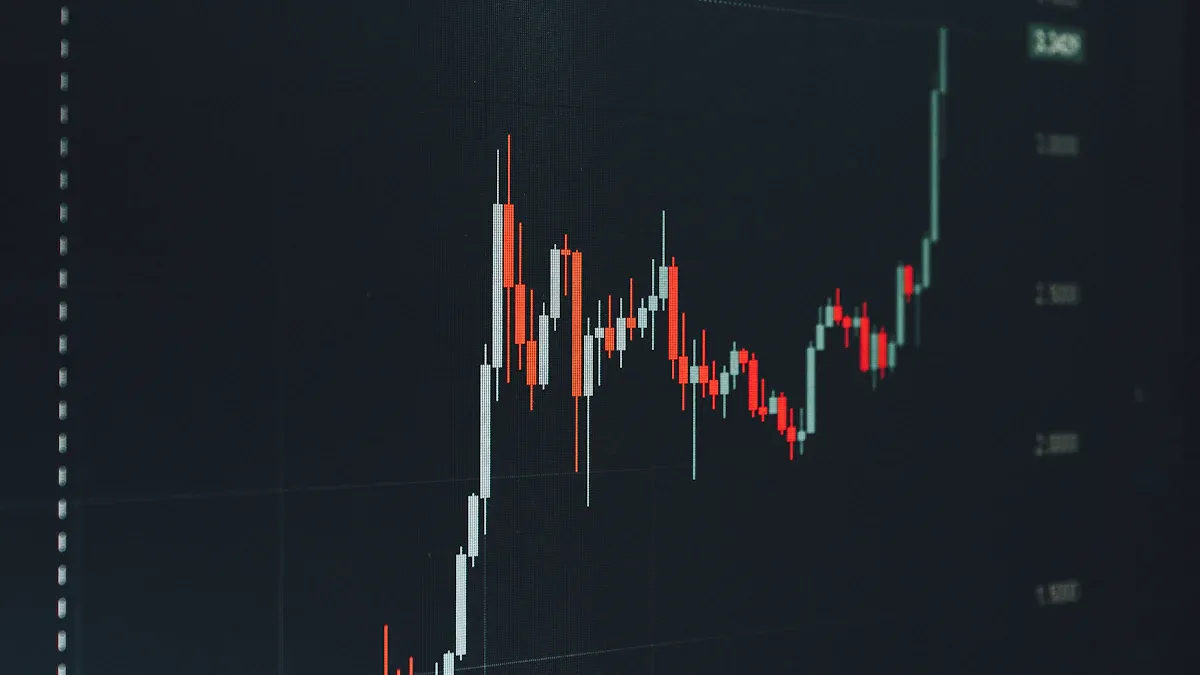Combining Calendar Effects & Price Elasticity in 7-Day Forecasts

Accurate short-term sales forecasting helps businesses grow and adapt to changing markets. You can predict future sales trends by analyzing factors like holidays, seasonal shifts, and promotional events. These calendar effects often influence buying patterns, making them essential for forecasting. However, combining these effects with price elasticity, which measures how pricing impacts demand, can be challenging. When you integrate these factors effectively, your forecasts become more precise, helping you make better decisions.
Key Takeaways
Calendar effects show how sales change during certain dates or events.
Price elasticity shows how price changes affect how much people buy.
Mixing calendar effects with price elasticity makes sales predictions better.
Look at past data to find sales trends and price reactions.
Pick good forecasting tools like SARIMA or Prophet for better predictions.
Calendar Effects and Their Impact on Sales

What Are Calendar Effects
Calendar effects refer to predictable patterns in sales or market trends caused by specific dates, days, or periods. These effects often stem from recurring events like holidays, weekends, or seasonal changes. For example, sales might spike during the holiday season or drop on weekdays compared to weekends. By identifying these patterns, you can better understand how time-based factors influence consumer behavior.
Researchers often adjust data to account for calendar effects. This process removes variations caused by known events, making it easier to analyze historical trends. Studies have shown that monthly sales fluctuations often result from these effects, highlighting their importance in accurate forecasting.
Examples of Calendar Effects in Sales Trends
Calendar effects can significantly impact sales trends across industries. For instance:
Weekends: Saturdays and Sundays consistently see higher shopping activity compared to weekdays.
Paydays: Public sector paydays, such as the 15th and the last day of the month, often lead to a slight increase in sales.
Seasonalities: Financial markets and retail industries experience cyclical patterns, such as increased sales during the holiday season or higher returns in January.
Calendar Event | Impact on Sales Volume |
|---|---|
Saturdays and Sundays | Consistently the biggest shopping days of the week |
Public sector paydays | Slight uptick in sales after the 15th and last day of the month |
Other studies have revealed unique patterns, such as the January effect, where markets show significant positive returns in January compared to other months. Similarly, the Thai stock market demonstrates a persistent monthly pattern, with negative returns on Mondays and higher returns in January. These examples illustrate how calendar effects can shape sales trends and market behavior.
Challenges in Accounting for Calendar Effects
While calendar effects provide valuable insights, accounting for them in forecasts can be challenging. One major issue is separating the impact of calendar events from other factors. For example, firms may delay announcements of bad news, which skews data and complicates analysis. Additionally, the timing of earnings announcements often depends on the nature of the news itself, making it difficult to isolate calendar-driven variations.
Another challenge lies in the endogenous nature of these effects. Within a firm, variations in timing are often internally determined, which can confound results. This makes it harder to draw clear conclusions about how calendar effects influence sales. To overcome these challenges, you need robust analytical tools and methods that can adjust for these complexities.
The Role of Price Elasticity in Forecasting
Understanding Price Elasticity
Price elasticity measures how sensitive consumer demand is to changes in price. It helps you understand whether a small price adjustment will lead to a significant change in sales volume. For example, if a product has high price elasticity, even a slight price increase might cause demand to drop sharply. On the other hand, products with low price elasticity tend to maintain steady demand, even when prices fluctuate.
This concept plays a critical role in forecasting because it allows you to predict how pricing decisions will impact future sales. By analyzing elasticity, you can identify the optimal price point that maximizes revenue while maintaining demand. Businesses often use this data to fine-tune their pricing strategies and improve forecast accuracy.
Price elasticity helps assess demand sensitivity, showing how consumers respond to price changes.
It aids in revenue optimization by pinpointing the price that maximizes income based on demand elasticity.
It supports cost-benefit analysis for marketing strategies, forecasting shifts in consumer behavior due to pricing decisions.
Factors Influencing Price Elasticity
Several factors determine how elastic a product's demand is. One key factor is the availability of substitutes. If many alternatives exist, consumers are more likely to switch when prices rise, increasing elasticity. Necessity also plays a role. Essential goods, like food or medicine, often have lower elasticity because people need them regardless of price.
Other factors include brand loyalty and the perceived importance of the purchase. For instance, high-priced wine brands show lower elasticity (−1.8) compared to general products (−2.6). Regular buyers and those purchasing for special occasions are less sensitive to price changes. Economic conditions also influence elasticity. During downturns, elasticity can spike by 25–50%, reflecting tighter consumer budgets.
Context | Findings |
|---|---|
High-Priced Brands | Price elasticity for high-priced wine brands averages −1.8, lower than the general figure of −2.6. |
Economic Shocks | During downturns, elasticity increases by 25–50%, showing heightened consumer price sensitivity. |
How Price Elasticity Shapes Consumer Behavior
Price elasticity directly impacts how consumers make purchasing decisions. When prices drop for elastic products, you might notice a surge in demand as shoppers take advantage of the lower cost. Conversely, a price hike can deter buyers, especially for non-essential items. This behavior highlights the importance of understanding elasticity when setting prices.
Elasticity also shapes broader market strategies. For instance, businesses often adjust prices during economic downturns to align with increased consumer sensitivity. By analyzing elasticity trends, you can anticipate shifts in purchasing patterns and adapt your strategies to meet changing demands. This approach ensures that your pricing decisions remain competitive and aligned with consumer expectations.
Integrating Calendar Effects and Price Elasticity
Key Forecasting Models for Integration
To combine calendar effects and price elasticity effectively, you need robust forecasting models. These models help you capture patterns, trends, and relationships between time-based events and pricing dynamics. Each model has unique strengths, making it suitable for different scenarios. Here's a breakdown of some widely used models:
Model Type | Description |
|---|---|
Captures linear trends, patterns, and seasonality. | |
Prophet | Handles seasonality, holidays, and trend changes. |
Deep Learning Models | Uses LSTM or RNNs to capture complex non-linear patterns. |
Machine Learning Models | Includes XGBoost or LightGBM for complex relationships. |
ARIMA with Hierarchical | Adds a hierarchical structure to ARIMA for better accuracy. |
ETS with Hierarchical | Combines Exponential Smoothing with hierarchical modeling. |
SARIMA with Hierarchical | Integrates Seasonal ARIMA with hierarchical structures. |
For example, ARIMA and SARIMA excel at identifying linear trends and seasonal patterns. Prophet is ideal for businesses that experience significant holiday-driven sales spikes. If your data involves intricate relationships, deep learning models like LSTM can uncover hidden patterns. By selecting the right model, you can better integrate calendar effects and price elasticity into your forecasts.
Steps to Combine Calendar Effects and Price Elasticity
Integrating these two factors requires a structured approach. Follow these steps to ensure accurate and actionable forecasts:
Data Collection: Gather historical sales data, including pricing information and calendar events. Ensure your data is clean and free of errors.
Identify Calendar Effects: Analyze your data to pinpoint recurring patterns, such as holiday sales spikes or weekend shopping trends.
Calculate Price Elasticity: Use statistical methods to measure how price changes impact demand for your products.
Select a Forecasting Model: Choose a model that aligns with your business needs. For instance, use SARIMA for seasonal trends or LSTM for complex relationships.
Integrate Factors: Combine calendar effects and price elasticity into your chosen model. This step often involves creating variables that represent these factors.
Validate the Model: Test your model using a portion of your data to ensure it provides accurate predictions.
Generate Forecasts: Use the validated model to create 7-day forecasts. Adjust your strategy based on the insights gained.
By following these steps, you can create forecasts that account for both time-based patterns and pricing dynamics. This approach helps you make informed decisions and adapt to market changes.
Tools for Implementing Combined Forecasting
Several analytical tools can help you implement combined forecasting approaches. These tools use advanced methodologies to improve forecast accuracy. Here are some examples:
Study | Methodology | Description |
|---|---|---|
Bayesian methodology | Combined statistical forecasts with raw GCM output for better Niño3.4 predictions. | |
Luo et al. (2007) | Bayesian approach | Updated climatology models with raw outputs from multiple GCMs. |
Wang et al. (2012) | BMA method | Merged multiple statistical seasonal rainfall forecasting models. |
For instance, Bayesian methodologies allow you to combine statistical forecasts with raw data, improving accuracy. Similarly, the BMA method merges multiple models to create a more reliable forecast. These tools can handle the complexities of integrating calendar effects and price elasticity, making them invaluable for businesses.
When choosing a tool, consider your specific needs. If your focus is on seasonal trends, a tool that supports hierarchical modeling may be ideal. For more complex scenarios, Bayesian approaches offer flexibility and precision. By leveraging these tools, you can streamline the forecasting process and achieve better results.
Case Study: Real-World Application in 7-Day Forecasts

Example of a Combined Forecasting Approach
Combining calendar effects and price elasticity in forecasting requires a thoughtful approach. Practical applications of this method have shown its effectiveness across various fields. For example:
A study on hierarchical time series forecasting revealed that no single model consistently outperforms others. This highlights the complexity of data generation processes.
Clemen's work demonstrated the value of forecast combination in fields like economics and meteorology.
The M3 and M4 forecast competitions proved that combined forecasting methods often deliver better results than individual models.
These examples emphasize the importance of integrating multiple factors into your forecasting strategy. By combining calendar effects and price elasticity, you can capture both time-based patterns and pricing dynamics, leading to more accurate predictions.
Results and Insights from the Case Study
The case study demonstrated the tangible benefits of using a combined forecasting approach. The method improved overall forecasting accuracy by 6%. For high-volume, low-variability products, accuracy increased by over 10%. This improvement translated into a potential financial gain of 1–2% of sales volume.
These results highlight the value of integrating calendar effects and price elasticity. You can achieve better accuracy and financial outcomes by addressing both factors. This approach also helps you adapt to market changes and make data-driven decisions.
Best Practices for Practitioners
To implement combined forecasting effectively, follow these best practices:
Best Practice | Description |
|---|---|
Accurate Reporting | Present findings truthfully and reliably. |
Clear Presentation | Use effective visualization to enhance data understanding. |
Adherence to Guidelines | Follow established standards to maintain credibility. |
Additionally, keep these tips in mind:
Understand the difference between quantitative and qualitative research.
Choose an appropriate sample size for your data.
Clearly define your research goals.
Stay calm and organized when collecting data.
Keep your questions simple and focused.
By following these practices, you can ensure your forecasts are both accurate and actionable. This will help you make informed decisions and stay ahead in a competitive market.
Integrating calendar effects and price elasticity into your forecasts ensures more accurate predictions. This approach helps you anticipate sales trends and make informed decisions.
Key Takeaways:
Calendar effects reveal time-based sales patterns.
Price elasticity shows how pricing impacts demand.
Combining both factors improves forecast precision.
Tip: Start small by analyzing historical data for recurring patterns and price sensitivity. Use tools like SARIMA or Prophet to simplify the process.
By adopting these methods, you can refine your short-term sales strategies and stay ahead in competitive markets.
FAQ
What are the benefits of combining calendar effects and price elasticity in forecasting?
Integrating these factors improves forecast accuracy. You can predict sales trends more effectively by accounting for time-based patterns and pricing dynamics. This approach helps you make better decisions, optimize pricing strategies, and adapt to market changes.
Tip: Start by analyzing historical data for recurring patterns and price sensitivity.
How do I calculate price elasticity for my products?
To calculate price elasticity, divide the percentage change in demand by the percentage change in price. For example:
Price Elasticity = (% Change in Quantity Demanded) / (% Change in Price)
This formula helps you understand how sensitive your customers are to price changes.
Which forecasting model should I choose for my business?
The best model depends on your needs. Use SARIMA for seasonal trends or Prophet for holiday-driven sales. For complex data, try deep learning models like LSTM. Always test your model with historical data to ensure accuracy.
Note: Start with simpler models before exploring advanced options.
Can small businesses benefit from combined forecasting?
Yes! Small businesses can use combined forecasting to optimize pricing and plan for seasonal demand. Even basic tools like Excel or Google Sheets can help you analyze data and identify trends.
Emoji Insight: 📊 Data-driven decisions lead to smarter strategies and better results.
Are there tools to simplify combined forecasting?
Yes, tools like Prophet, XGBoost, and Bayesian models simplify the process. These tools handle complex data and improve forecast precision. Choose one based on your business size and data complexity.
Tool | Best For |
|---|---|
Prophet | Seasonal and holiday-driven trends |
XGBoost | Complex relationships |
Bayesian | Combining multiple data sources |
Pro Tip: Experiment with free tools before investing in advanced software.
See Also
Effective Retail Demand Forecasting Techniques for Each Week
Incorporating External Factors Like Weather and Holidays in Demand Models
Challenges and Techniques in Short-Term Demand Forecasting
Enhancing Forecast Precision Using Hierarchical Time-Series Approaches
